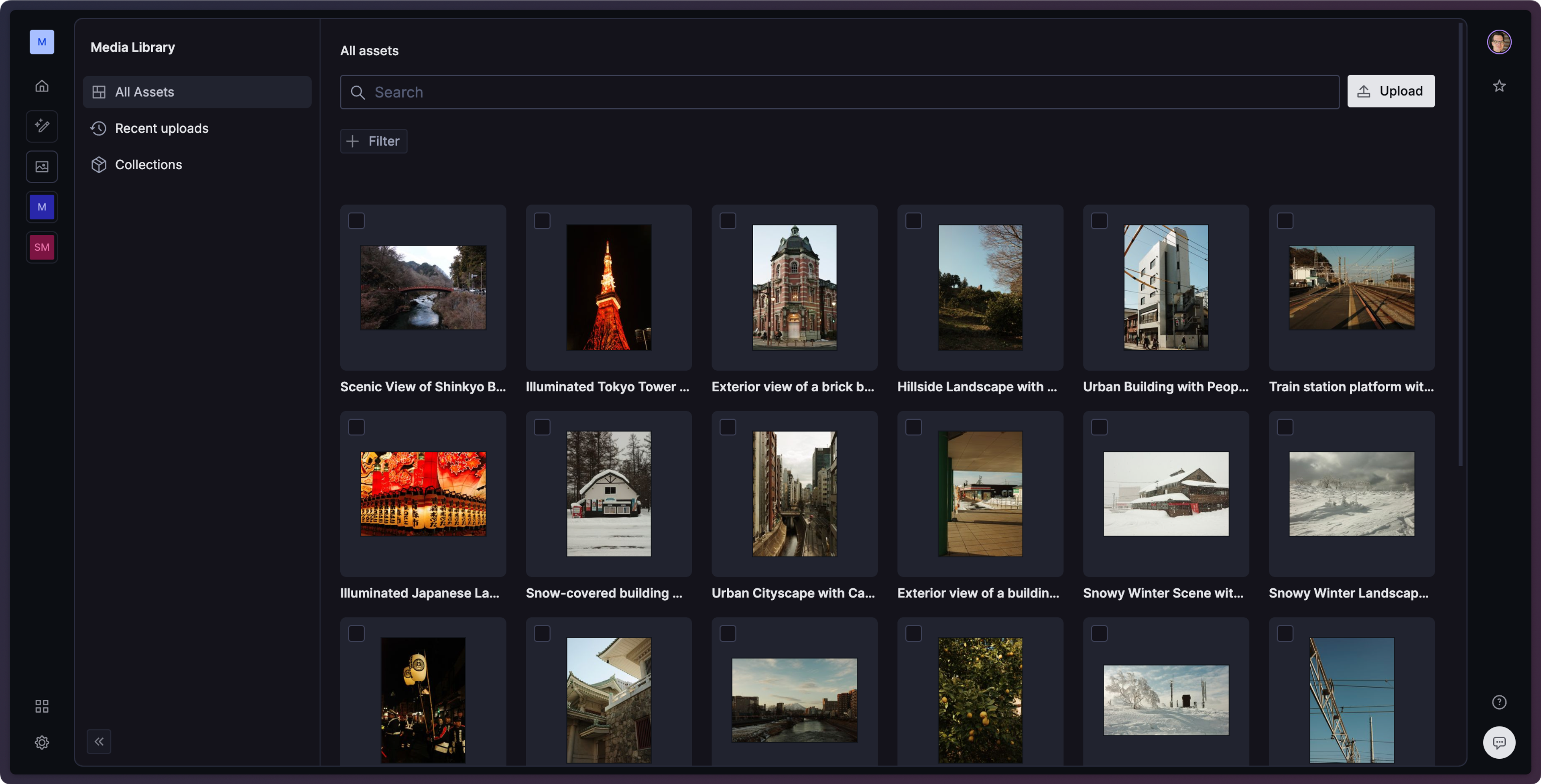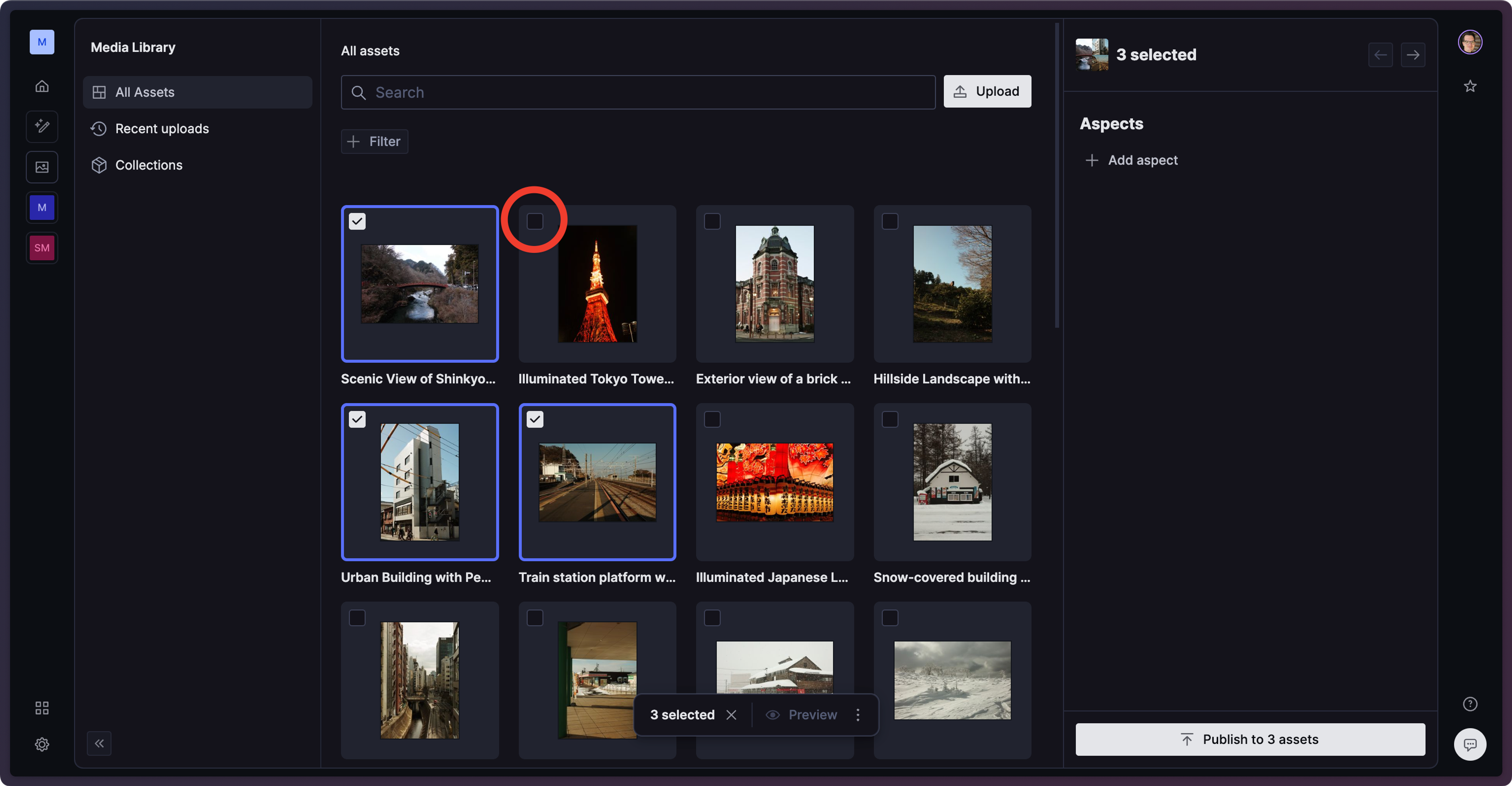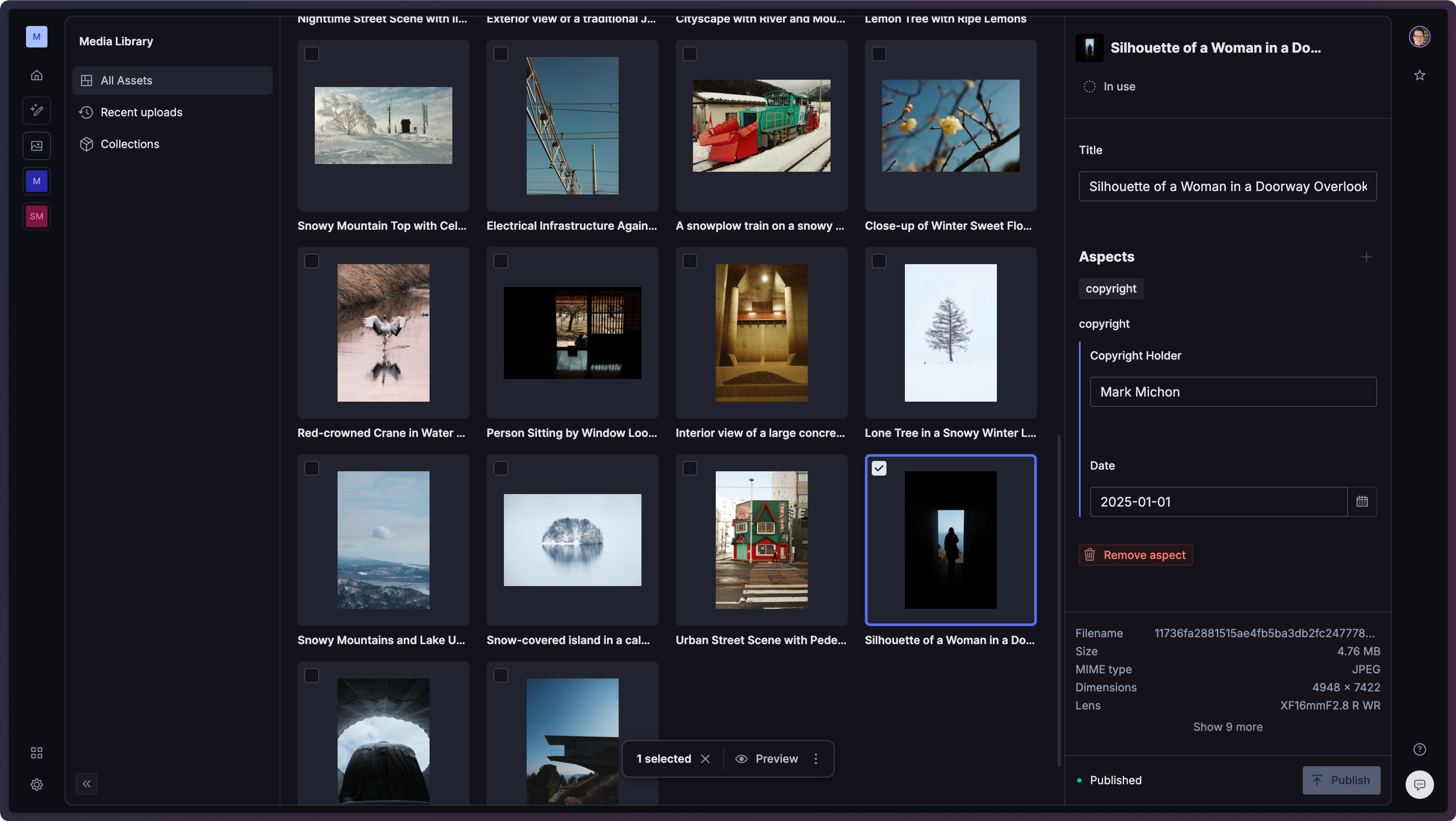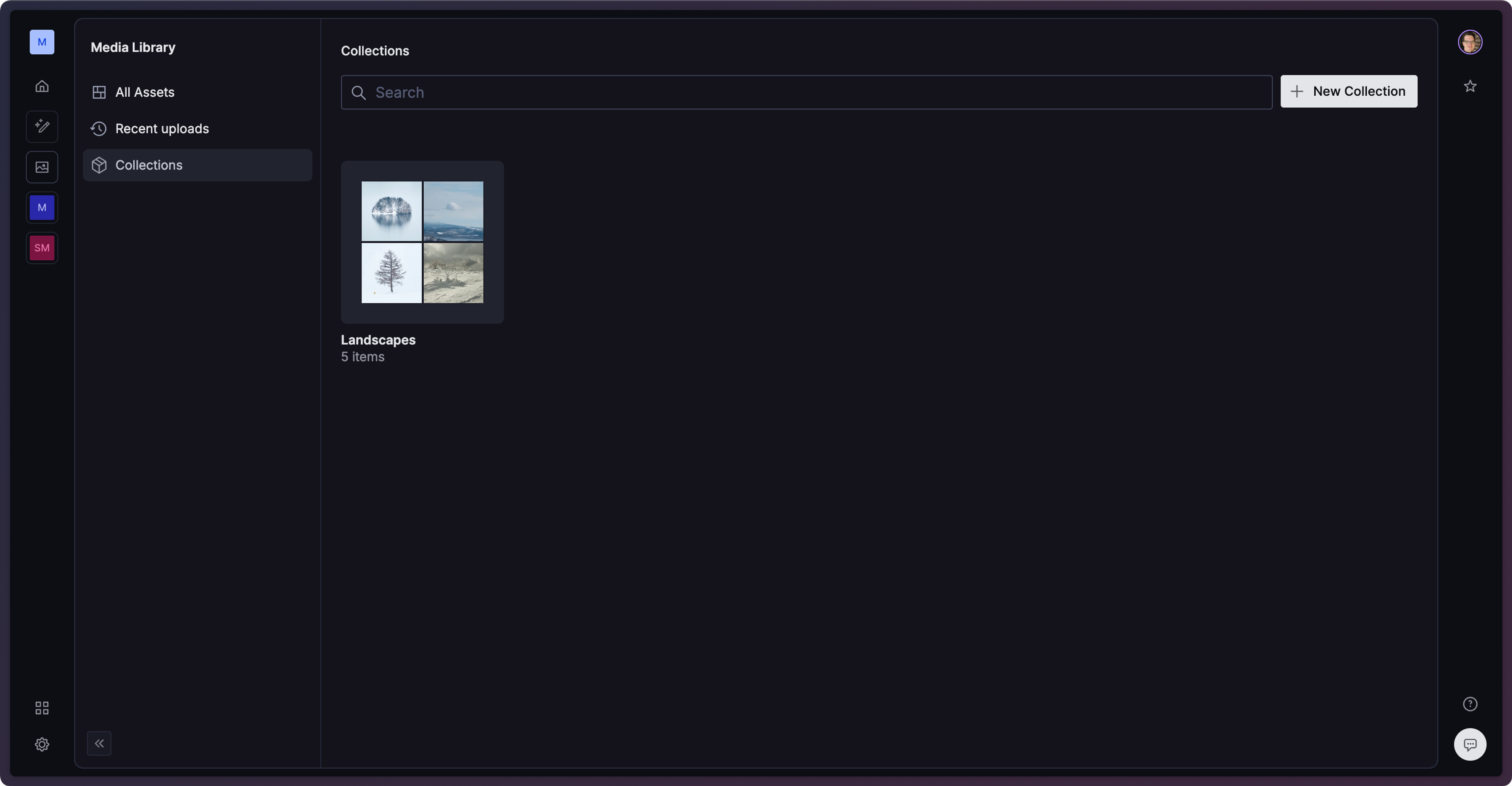Meet the library
Get to know Media Library's user interface.
Media Library at a glance
This is a paid feature
This feature is available as an addon for certain Enterprise plans. Talk to sales to learn more.
Media Library is home to your organization's shared assets. It stores assets for use across your projects and datasets, and allows content teams to have a central source of truth for their media.

Media Library is an organization-wide application. You can access it from the dashboard by selecting the "Media" icon in the left navigation bar. Media Library requires the dashboard.
Where are my existing assets?
If you've been using Sanity already, you may have images and other files that you're using in your studios. These files are saved within your datasets, and they are not automatically copied into the media library.
Soon, we will add the capability to migrate existing assets into the media library and preserve connections to those assets within your studios.
The library interface
The library adapts based on the assets you have selected.

The core of the interface is split into three sections:
- The asset list: View existing assets, filter the results, and upload new assets.
- The library menu: Narrow your view of the asset list, explore collections, and see recently uploaded assets.
- The asset sidebar: Edit asset metadata, apply aspects, and view additional details about the asset.
Uploading assets
There are two ways to upload assets in the library interface:
- Select the Upload button in the top right of the asset list to upload an asset.
- Drag-and-drop one or more assets directly into the asset list to start an upload.
As your assets upload, you'll see a status screen showing the progress of each asset.
Select multiple assets
You can select multiple assets at once by pressing the checkbox in the top-left corner of each asset.

Delete assets
To delete one or more assets, first select them in the asset list.
Next, select the vertical "..." icon from the popover at the bottom of the asset list.

Select "Delete 1 asset" to delete the asset.
Aspects

Aspects let you organize your assets with customly defined fields. Aspects are defined programatically with a schema-like syntax.
You can use aspects to sort and filter results in the asset list, or to store internal metadata.
Add aspects to an asset, or edit an aspect
To add aspects to an asset, first select one or more assets in the asset list.
The sidebar will list all available aspects. You can click the title of any aspect to expand it and change its values.

Once you've made changes to an aspect, select the "Publish" button to publish the changes to the asset.
Publishing changes
Don't forget to publish changes whenever you add or remove aspects, or when you make updates to the asset title.
Collections

Collections allow further grouping of assets and are not limited to available aspects. You can create new collections while selecting an asset, or from the collection's screen.
Add an asset to a collection
You can add an asset to a collection in two ways:
- Navigate to the collection, then select "Add" in the top right, where the upload button normally is.
- In any view, select the asset then, then select the vertical "..." icon, then select "Add to existing collection" from the popover menu.
Public and private assets
By default, assets are public to any person or app with the URL or identifier. You can set an asset to private to limit its visibility to logged-in users of the Media Library.
To change an asset's visibility:
- Select the asset in Media Library.
- In the asset sidebar, select the visibility indicator. If the asset is public, it will display Public with a globe icon. If the asset is private, it will display Private with a lock icon.
- Select the desired visibility from the popover list.


Private asset restrictions
When setting an asset's visibility to private, keep the following in mind:
- Assets set to "Private" are only visible in Media Library for logged-in users. Any apps, websites, or other consumers of the asset will no longer have access.
- Switching visibility does not require a "Publish" for changes to take affect.
- When changing from public to private, the asset's URL may remain active for up to 30 days if it was previously cached. To limit this, set assets to private during upload.
Was this page helpful?